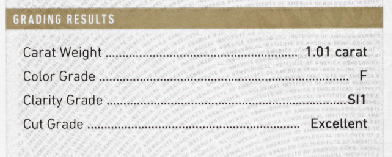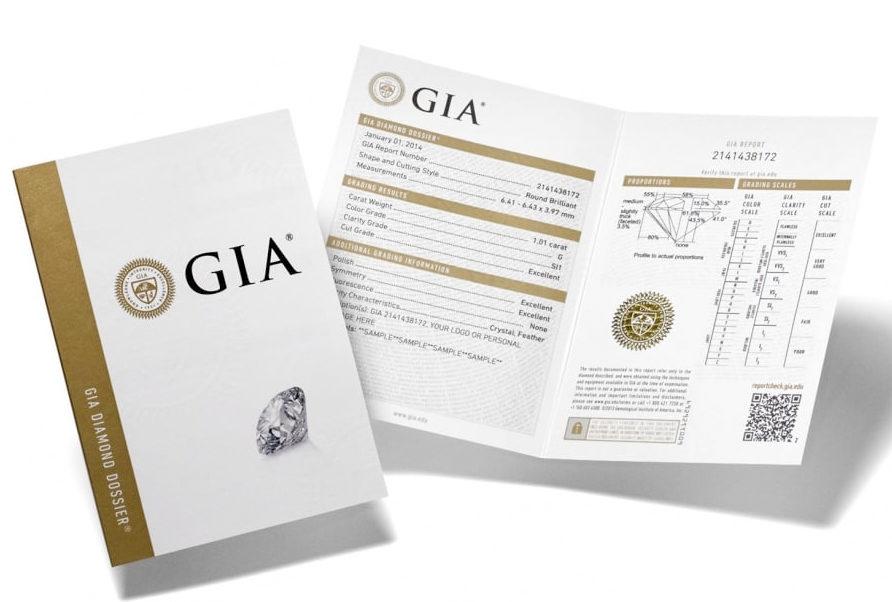Key elements that appear in full grading reports are as follows:
The Grading Report Number
This unique number, which is issued grading laboratory, links to a copy of that report held by the lab that often can be retrieved online. It frequently provides the most conclusive proof that the report is genuine and that it is associated with a specific diamond.
Shape and Cutting Style
A description of the diamond’s shape. More than half the reports issued are for round brilliants, but there are numerous fancy shapes that may be identified.
Measurements
This is a brief description in millimeters of the depth and diameter (in the case of round stones), or its length and width (in the case of non-round stones).
The Grading Results
This is the section of the report in which each of the four Cs is listed. A separate measurement or grade will be provided for carat weight, clarity, color and cut.
On a GIA grading report, a cut grade is issued for standard round brilliant cut diamonds in the D-to-Z color range. If an asterisk appears next to the color grade, a color treatment was detected.
Polish
This is general score given the quality or degree of smoothness to which each diamond facets was polished. It typically ranges from “Excellent” to “Poor.”
Symmetry
This is a score that measures the precision with which the facets are aligned, according to the requirement of its specific shape. It typically ranges from “Excellent” to “Poor.”
Fluorescence
This will report the presence or absence of FLUORESCENCE in the diamond. This refers to a diamond’s tendency to glow slightly when subjected to ultraviolet light. In higher quality stones this is considered a deficit, although in lower quality stones is does slightly improve the color appearance. The score in a stone with FLUORESCENCE provided typically ranges from It typically ranges from “Very Strong” to “Faint.”
Treatments
As a matter of policy GIA will not issue a grading reports for diamonds that have undergone non-permanent treatments, like fracture filling and coating, but it will grade stones that have treated using a permanent process, like HPHT color enhancement, and these will be described on the report itself. Other grading laboratories may have more lenient policies regarding grading stones with non-permanent treatments, but also always should describe the treatments on the report.
If a diamond is laser engraved in any way, typically upon its the identifying mark or number will be listed on the grading report. Often it is the lab itself that offers the grading service.
Proportion Diagram
A full grading report will typically include two diagrams, one of which provides a graphic profile representation of the diamond’s actual proportions. Measurements that will be listed include table percentage, depth percentage, crown angles, pavilion angles and girdle thickness. It also indicates the presence or absence of a culet.
Plotted Diagram
The second diagram indicate the type or nature, position, and the approximate size of a clarity characteristic seen from the crown and pavilion of diamond. External blemishes are marked in green while internal inclusions are marked in red.
Security Features
Most grading reports today come with a range of security features to defend against forgeries. These may include a holograms, a universal product code or an embossed stamp.







